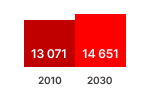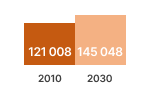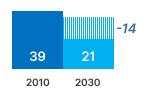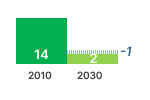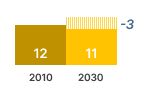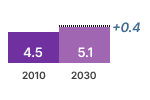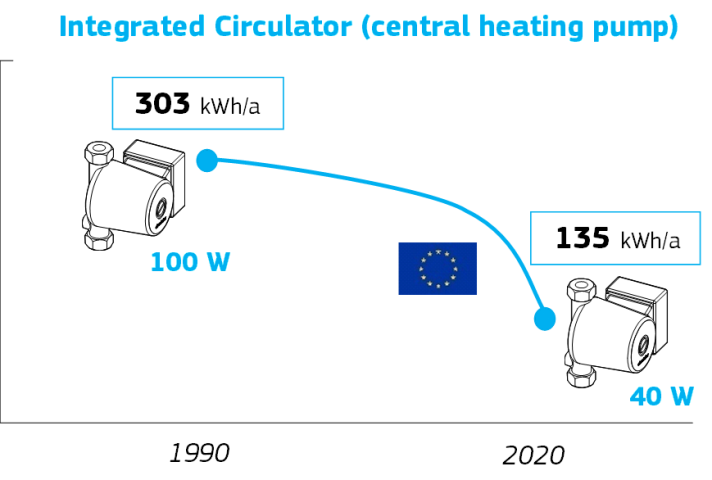Expected Savings
Circulators are a typical example where forward-looking manufacturers, pressed the Commission to investigate the eligibility for an Ecodesign regulation for their products, because they believe that ambitious standards in energy efficiency are not only good for the environment but also good for business.
Circulator pumps up to 2.5 kW are typically, but not exclusively, used to pump water through (closed) central heating systems. Although power consumption may be limited, they are ubiquitous and have very long operating hours (typically 5000 hours per year). They may be a component in a heating boiler (‘integrated’), or used as a standalone product mounted by the installer somewhere in the heating circuit.
At the time when the Commission first investigated the product in 2008 - 2009, their electricity consumption amounted to 39 TWh/year, comparable to e.g. the energy use of washing machines in the EU in 2010 (36 TWh/a). Furthermore, the energy saving potential was substantial due to the tendency in the sector to vastly over-dimension the circulator and use only basic controls. The new metrics of the Ecodesign regulation played an important role in transforming the market, with a drop in electricity use to 33 TWh/a in 2015, 24 TWh/a in 2020 and projected 21 TWh/a in 2030. This is a 40% saving in electricity and CO2 emissions, while at the same time the product contributed to achieving a higher heating comfort.
Source: estimations from the Ecodesign Impact Accounting Overview Report 2024
Note about double counting: some circulators covered by the Regulation are incorporated in products covered by other ecodesign Regulations (e.g. boilers). Therefore, a part of the energy consumption / savings shown here is also included in the figures of these other products, leading to a form of double counting. The double counting effect is already accounted for in the figures above (the values shown here need to be multiplied by 2.63 to get the non-double counted values).



